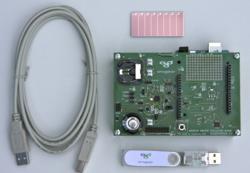January 22, 2013

A Dutch company aims to change the way low-power electronics are designed by creating a separate component for power management to reduce the need for battery power in wireless sensor networks and other applications.
Anagear, based in Rosmalen, The Netherlands, recently came out of stealth mode with its first family of ultra-low-power circuits and a developer kit aimed at providing OEMs and electronics designers with a different way to manage the power in small devices that will save more energy than current methods, said Guus Dhaeze, vice president of sales and marketing for Anagear. "In applications like wireless sensor networks, a lot of those devices are not active all the time -- they are in active standby mode in order to save power," he told Design News.
Generally, the system's microcontroller manages this standby mode, but because of the leakage current in this type of design, "they are not the best products to do this management of power consumption in a device," Dhaeze said.

Enter Anagear's ANG line of analog circuits, which aim to take power management out of the controller and provide a more efficient way to provide a standby mode for small devices.
Anagear's ICs achieve this in three key ways. First, the circuits take over complete control of the power-management system and switch off every other component that is not needed in standby mode. "Even the microcontroller is switched off," he said. The circuits utilize voltage scaling to convert the power of external components to the system to the bare minimum. "If you attach a microcontroller at 1.2 volts, we can deliver at that level. The circuit doesn't consume more."
During standby mode even when the microcontroller is not active, the Anagear circuit can autonomously monitor critical system voltages, such as how much energy is left in the battery and what the internal temperature of the system is. "As long as those signals remain within certain limits, there is no need to alarm the system and wake up the microcontroller," Dhaeze said.
ANG currently has three circuits in its line. The premium offering, the ANG1010 integrated circuit (IC), includes power management and supervisory controller for battery- or photovoltaic-powered systems. This circuit can plug into an indoor solar panel to offer an alternative power source to a battery. "People can connect a small solar panel for indoor use directly to our chip and we harvest the energy, storing it from the solar panel into a hydrorecharageable battery or supercapicitor," Dhaeze said.
About the Author(s)
You May Also Like



